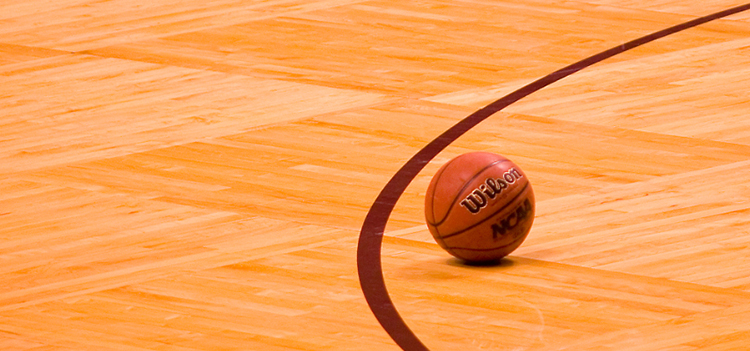Dissecting The Bank Shot

(Inside Science) -- According to Larry Hunter, the act of banking a basketball off the backboard and into the hoop is becoming a lost art.
The head coach of the men's basketball team at Western Carolina University in Cullowhee, N.C., Hunter said that today's explosive athletes tend to overlook bank shots because of the way they play the game -- including focusing on dunks.
However, a new scientific analysis shows that those changes may not be helping players score more points. Shooting from certain areas of the court, players are more likely to score if they aim the ball at the backboard instead of straight at the hoop. That's the conclusion of a new study in the Journal of Quantitative Analysis in Sports by Larry Silverberg and two colleagues.
Silverberg is a mechanical and aerospace engineering professor at North Carolina State University in Raleigh, where Hunter was an assistant coach from 2001-05.
When the topic of possible research areas within basketball came up years ago, it was Hunter who inspired Silverberg to study bank shots.
A long-time recreational player, Silverberg is a fan of the shot. "When you get good at a bank shot you just can't miss," he said.
In earlier research, Silverberg's group developed a mathematical model to simulate the release of a shot and the flight of the basketball, including what happens when the ball collides with the backboard and rim. The new study used that computer program to evaluate the best release speeds and launch angles from over 100 locations on the court, all less than 15 feet from the hoop -- less than the distance of a free throw .
Those calculations represented millions of possible trajectories and required months of computer processing time. The researchers assumed a hypothetical player who released a standard men's basketball from a height of 7 feet, with an aiming error equivalent to someone who makes free throws at a 70 percent rate. By comparing the results for aiming directly at the hoop versus aiming at the ideal spot on the backboard -- which differs depending on where the player is -- they were able to identify what shot gives the best result from each tested court location.
The researchers created a color-coded graph that identifies the court areas where players are better off trying bank shots. The best spots are off to the sides but far enough in from the end of the court to give shooters a good angle on the backboard . There's also a small area a few feet in front of the free-throw line where banks shots should be preferred.
Bank shots from these areas are as much as a 20 percent more likely to go in than shots aimed directly at the hoop, the researchers found.
"The pretty fundamental new discovery is that you’re not always best off to shoot directly at the basket," said Mont Hubbard, a mechanical engineering professor at the University of California, Davis, who also studies basketball and was not connected to the study.
Silverberg's research showed that the ideal target spot on the backboard for bank shots depends primarily on the angle between the baseline, which runs along the end of the court, and a line running from the basket to the shooter. For a given angle, the best target on the backboard is essentially the same no matter how far away the shooter is. These "aim points" have little connection to the square painted on the backboard -- which therefore doesn't make a good bull's-eye for the shooter.
Connecting the aim points from all possible shot locations produces a pattern that looks much like the letter "V" drawn above the red square on the backboard. This finding makes it possible to develop an easy system for practicing bank shots.
Silverberg worked out the right size for a V that can be taped onto the glass and where to place a vertical rod a few inches behind the middle of the backboard. A shooter looking to make a bank shot should aim at the point where the V and the vertical rod cross.
"This sets up a way that people can basically learn how to shoot a bank shot," said Silverberg. "Coaches today don't have a way of doing that."
"To shoot it straight in you almost have to have it a little more perfect," said Hunter, "I think anything like [Silverberg's target] could be a good teaching aid."

